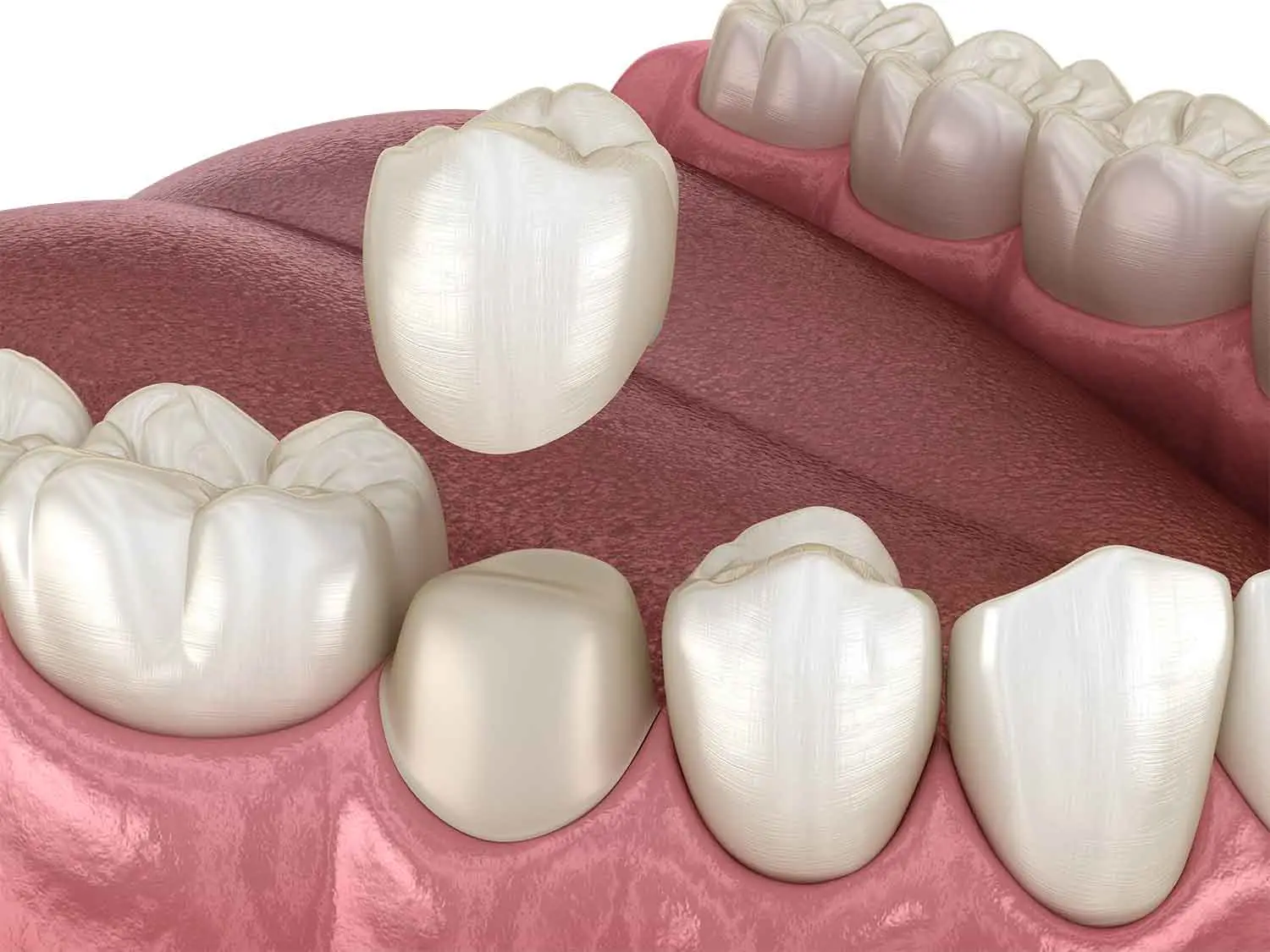Dental crowns are a versatile solution to various dental issues, including covering a tooth, restoring a tooth that has been fractured or worn down, and protecting a tooth that is weak with a large filling, anchoring a dental bridge, or covering a dental implant. It is the intention of this book to offer detailed insights related to choosing the right dental crown tailored for Palmetto Family and Cosmetic Dentistry patients.
Understanding Dental Crowns
Dental crowns, often called “caps,” are custom-made restorations that cover all exposed teeth. They are designed to restore a tooth’s size, shape, strength, and appearance. Crowns can be constructed of porcelain, ceramic, metal alloys, composite resin, or a combination of these materials, each offering unique benefits and considerations.
The Need for Dental Crowns
The decision to get a dental crown involves several factors, including:
- Tooth Damage: Severe decay or a large filling may weaken a tooth, necessitating a crown to protect it from further damage.
- Restoration: Crowns restore functionality to fractured, worn, or misshapen teeth.
- Cosmetic Enhancement: Crowns are used to improve the appearance of discolored or poorly shaped teeth.
- Dental Implants: Crowns are the final restoration for dental implants, replacing missing teeth.
- Dental Bridges: Crowns anchor bridges in place, filling the gap created by one or more missing teeth.
Types of Dental Crowns
When considering restorative dental treatments, dental crowns stand out due to their versatility and effectiveness in restoring the appearance and function of damaged teeth. There are several types of dental crowns, each with its unique properties and suitable applications:
- Porcelain Crowns are highly favored for their natural appearance and are often used for front teeth restoration. They mimic the translucency and color of natural teeth but may require more tooth structure removal than other types.
- Ceramic Crowns: Similar to porcelain in aesthetics but made from a different kind of ceramic. These crowns are also known for their natural look and are biocompatible, posing no risk of allergic reaction.
- Gold Alloys Crowns: These crowns are a mix of gold, copper, and other metals, offering a solid bond to the tooth, durability, and a high level of biocompatibility. They are less likely to wear down the opposing teeth and are preferred for strength.
- Base Metal Alloys Crowns: Made from non-noble metals that resist corrosion and are incredibly strong. They require the least amount of healthy tooth removal before fitting and are known for their durability.
- Porcelain-Fused-to-Metal (PFM) Crowns: Combining the strength of metal with the aesthetic appeal of porcelain, PFM crowns are a compromise between the two. While strong and can match adjacent teeth, the metal underlay may show a dark line near the gums.
Choosing the Right Type of Crown
The choice of crown material depends on various factors, including:
- Aesthetics: A porcelain or ceramic crown might be the best choice for front teeth due to its natural appearance.
- Durability: For molars, which are not as visible but endure more force, metal crowns or PFM crowns could be preferable.
- Cost: Budget considerations may influence the choice, with resin crowns being the most budget-friendly and metal or porcelain crowns being more of an investment.
- Allergies: For patients with metal allergies, ceramic or porcelain crowns would be the recommended option.
The Process of Getting a Dental Crown
Getting a dental crown typically consists of a number of stages, and the procedure may be slightly different depending on individual circumstances and the specific dental practice. Here’s a general outline of what you can expect:
- Initial Consultation: You’ll schedule an appointment with your dentist, who will examine your tooth to determine if a crown is necessary and discuss the procedure with you. For the purpose of determining the level of damage or deterioration, X-rays might be obtained.
- Preparation: If a crown is deemed necessary, the tooth receiving the crown will be prepared. In order to guarantee that you are comfortable throughout the treatment, this requires administering in order to numb the tooth as well as the surrounding area, a local anesthetic territory. After that, the dentist will form the tooth to the desired shape after removing any rotting or damaged sections of the tooth to accommodate the crown. This may involve reducing its size slightly.
- Impression: Once the tooth is prepared, in order to capture an impression of the tooth, your dentist will take the surrounding teeth. This impression creates a custom-made crown that fits your mouth perfectly. Digital impressions may sometimes be taken using advanced technology instead of traditional molds.
- Temporary Crown: While your permanent crown is being constructed, which may take a number of weeks, your dentist may safeguard the tooth that has been prepared by placing a temporary crown over it. This will ensure that the tooth continues to operate properly and maintain its appearance. The majority of the time, temporary crowns are constructed from acrylic or stainless steel, and they are not as long-lasting as permanent crowns.
- Permanent Crown Placement: Once your permanent crown is ready, you’ll return to the dentist’s office for its placement. The crown that is only temporary will be removed, and both the fit and color of the permanent crown will be checked against your natural teeth. In the event that everything appears to be in order, the dentist will then cement the crown into place.
- Final Adjustments: After the crown is cemented, it is possible that your dentist will make some final modifications to ensure that it fits properly and doesn’t interfere with your bite. This may involve trimming or reshaping the crown slightly.
- Aftercare Instructions: Your dentist will explain correct oral hygiene and food limitations for your new crown. These guidelines must be followed to ensure the longevity of your crown.
- Follow-Up Appointment: Sometimes, your dentist may schedule a follow-up appointment to check on the crown’s placement and ensure everything is healing correctly.
Overall, getting a dental crown typically takes two or more visits to the dentist’s office, depending on whether a temporary crown is required and how long it takes to fabricate the permanent crown.
Caring for Your Dental Crown
With proper care, dental crowns can last many years. Essential care tips include:
- Oral Hygiene: Continue brushing twice a day and flossing daily. Pay special attention to the area around the crown to avoid decay where the crown meets the gum line.
- Avoid Hard Foods: Chewing hard foods, ice, or complex objects can damage crowns.
- Regular Dental Visits: Regular check-ups and cleanings are crucial to ensure the health of the crowned tooth and surrounding gums.
Cost and Insurance
Dental crown prices depend on material and the complexity of the procedure. Most dental insurance covers some crowns when medically necessary. Palmetto Family and Cosmetic Dentistry provides transparent pricing and financing options to accommodate patients’ budgets and insurance coverage.
Dental crowns are a significant investment in your health, offering functional and aesthetic benefits. Whether you’re looking to restore a damaged tooth, cover a dental implant, or achieve a cosmetic improvement, the right dental crown can enhance strength. Contact us now and schedule your appointment with us!

